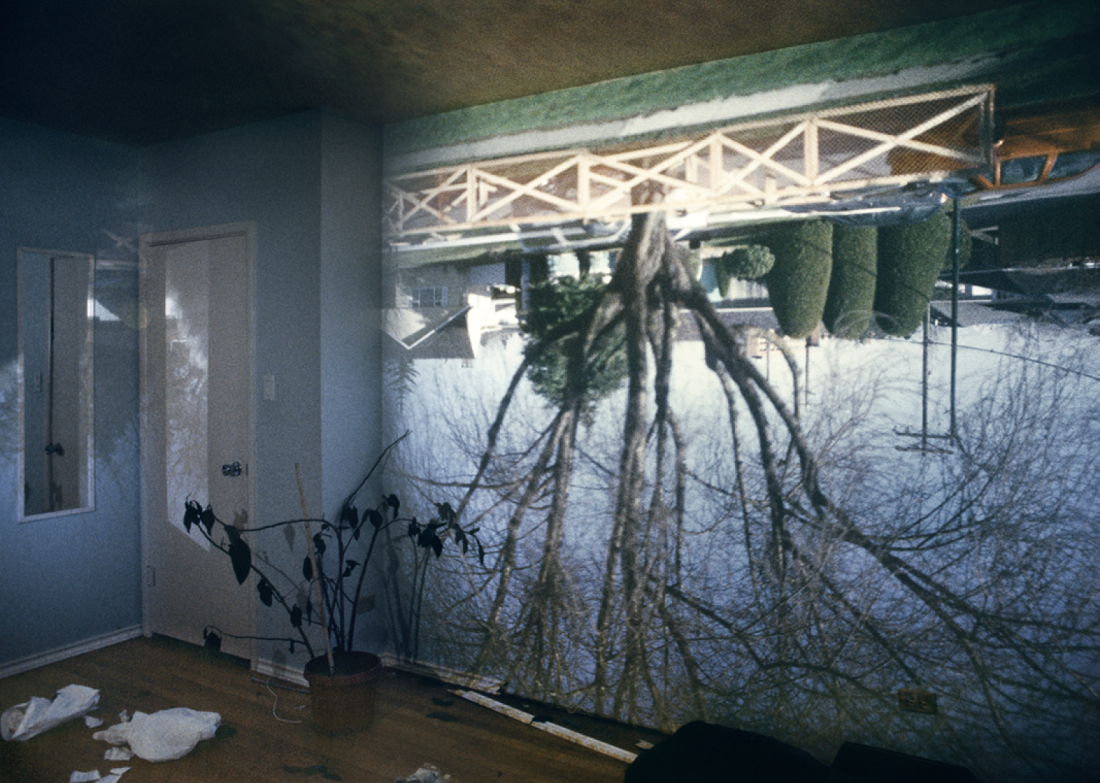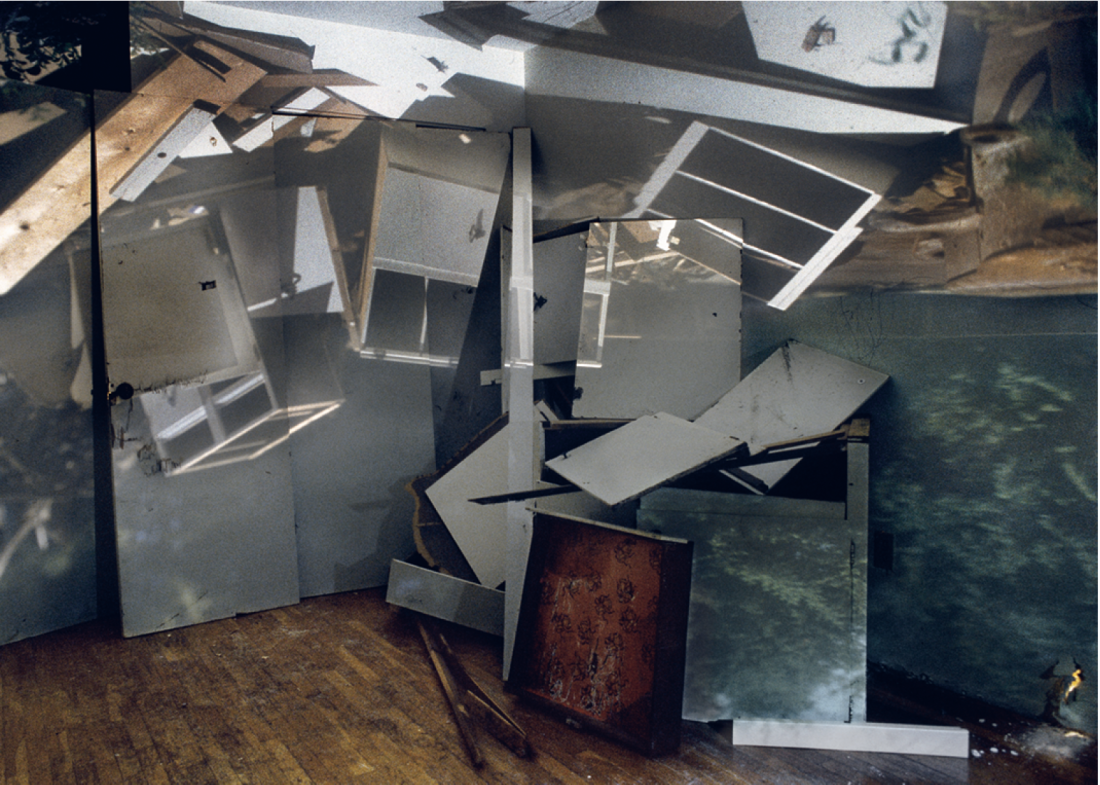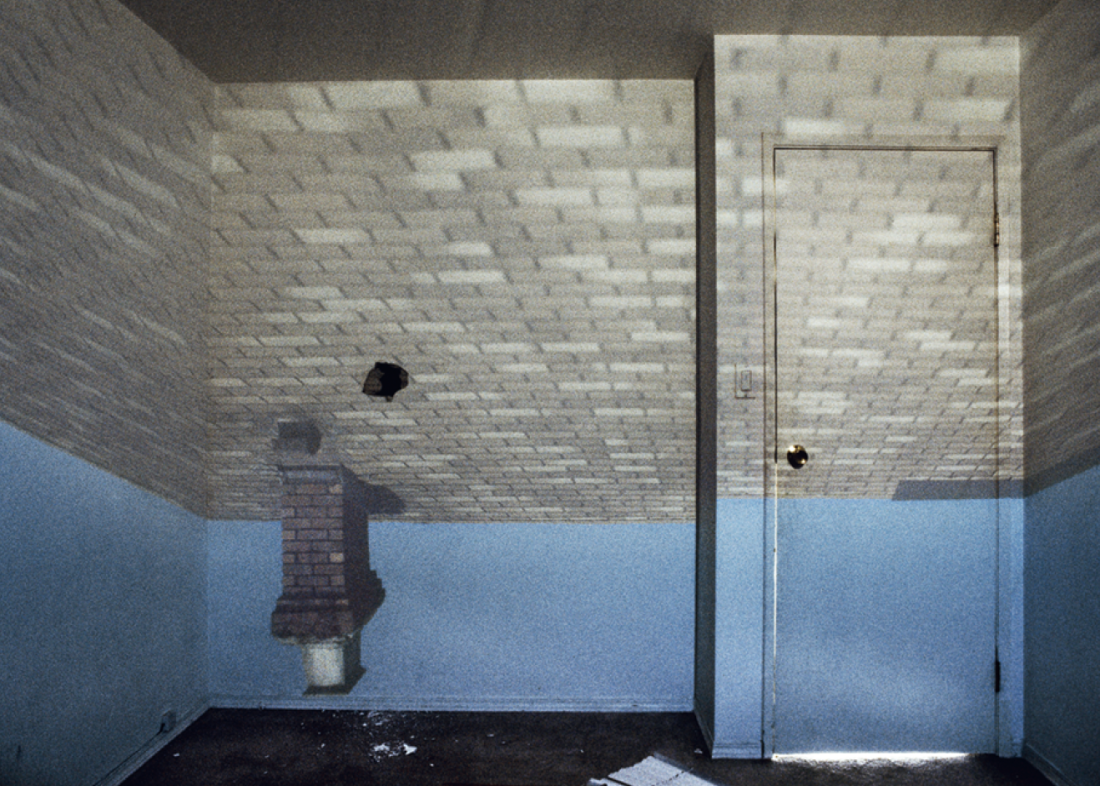James Nizam
Vancouver artist James Nizam entered photography through a side window. His student work and early career were directed towards the construction of large, architectonic installations, for which the camera served a purely documentary function. His subsequent embrace of photography as a dedicated practice evolved organically, from the tracking of his own large-scale, site-specific sculpture to the exploration of found (and sometimes artist-altered) architectural subjects. In Nizam’s last three bodies of chromogenic prints, he has focused on the built environment in transition, especially on elements of deterioration, decay and loss.
In many instances, he has insinuated himself into abandoned buildings awaiting demolition. He confronts his ghostly subjects with his own form of haunting, conducting a kind of seance in which his camera serves as a medium for communing with those who have departed this place. Nizam testifies for the unnamed people whose discarded belongings and forsaken rooms give evidence of their previous occupations or inhabitations. His work is bound up with history, memory and death. As a subtext, he also registers the relentless development that threatens to obliterate every last remnant of Vancouver’s architectural heritage.

James Nizam, Ash Tree in Room, 2007, lightjet print, 24 x 36”. Images courtesy Gallery Jones, Vancouver.
In earlier works, Nizam made nighttime sorties into an old and famous department store, then closed and slated for redevelopment. By employing a 35 mm camera, a long exposure time and ambient light, he bestowed a painterly appearance upon his images. The blue and green tones of the film he used also contributed to the photos’ strange beauty and aqueous character, as if they had been shot underwater. In another series, taken inside abandoned houses at night, he illuminated his found interiors with a hand-held flashlight, painting walls, ceilings, cupboards and appliances with an eerie, spectral light. Again, the nighttime use of a small camera and long exposure time contributed to the poetry of these photographic prints. The colour here is saturated, even electric.
For his most recent and ambitious body of photos, collectively titled “Anteroom,” Nizam geared himself up for daytime manoeuvres, entering boarded-up houses again awaiting demolition and, in each place, improvising a room-size camera obscura, often using garbage bags to black out a window around a crude lens. He then took his 35 mm shots of each theatrically altered room, the interior flooded with the upside-down images of the building’s surroundings, described in colours bleached by sunlight or diffused by clouds. The resulting photos confound oppositions of outside and inside, nature and culture, form and structure, presence and absence. They also record what were essentially daring physical performances and interventions by the artist, the illicit practice by which he invaded each unoccupied space and rapidly reconfigured it for his use. The stealth of his enterprise informs these works: Nizam’s photos are evidence of a form of creative trespass and conceptual exchange, almost akin to shop-dropping. Instead of inserting objects into retail situations, however, he invests abandoned buildings with imagery, with a kind of graffiti, fleetingly delineated in light rather than permanently marked in spray paint.

James Nizam, Pile of Cabinets in Room, 2007, lightjet print, 24 x 36”. ?
The inverted images projected on the walls, ceilings and litter-strewn floors of the doomed houses are both pastoral and catastrophic. The neat lawns, clipped hedges and carefully arranged flower beds of nearby homes, evidence of the paradise-regained impulses behind our making of gardens and parks, are contrasted with the muddy evidence of demolition and excavation, also taking place around the houses under scrutiny. In Destroyed House in Room, the collapsed remnants of a neighbouring building, the bare branches of uprooted trees leaning into the rubble and the ragged winter landscape beyond powerfully accord with the ruined interior space into which the image is projected. Trashed walls, smashed fixtures, a broken door, great smears of dirt and trails of debris—the mess within corresponds to the mess without. And the violence. Given the work’s composition and title, Nizam is clearly alluding to Jeff Wall’s 1978 backlit transparency, The Destroyed Room, creating a post-postmodern chain of cultural correspondences. (Wall’s work references Eugene Delacroix’s 1827 painting, The Death of Sardanapalus.) The inverting phenomenon of the camera obscura powerfully asserts the disaster metaphor of the world turned upside down.
Nizam’s background in installation art and his ongoing sculptural practice are evident in Stack of Doors in Room and Pile of Cabinets in Room, shots that appear as much constructed as found. In the former, a line of folding closet doors set up along an interior wall serves as the partial screen for the projected image of a group of such torn-out doors in the yard outside. The doors outside are bright white in the alien sunshine; the doors inside are painted with the dusty greys, rusty browns and dark greens of the surrounding landscape, like primed canvases overlaid with pigment. Pile of Cabinets is visually more complex and thematically more rich. In this image, torn-out cabinets and other building forms and materials dumped outside appear to interpenetrate similar debris piled up inside the room. The intersecting and intermingling of these used and bruised planes are evocative of many forms of Early Modernism, from Cubism and Constructivism to a Kurt Schwitters’s Merzbau.

Some of Nizam’s interiors are flooded with images of vibrant growth. A lushly blooming rhododendron backed by thick lawn and a dense stand of evergreen forest in one instance, and a huge, prehistoric-looking gunnera in another make explicit the shifting nature-culture interface upon which we balance our lives. Still, images of well-groomed nature, and of shelter and security—a well-maintained rooftop in Chimney in Room, a wooden fence in Ash Tree in Room—are consistently undermined by images of abandonment, destruction and decay. The structures in which we seek safety (and through which we aspire to create some material embodiment of our sense of self) and the little Edens with which we surround our homes are seen here to be as flimsy and vulnerable as the physical bodies we inhabit. They might have been lovely, once—and comfortable, too—but ultimately, they can provide no lasting protection against the onslaught of time, death and real estate development. ■
James Nizam’s “Anteroom” was exhibited at Gallery Jones in Vancouver from November 7 to November 30, 2007.
Robin Laurence is a writer, curator and a Contributing Editor to Border Crossings from Vancouver.

